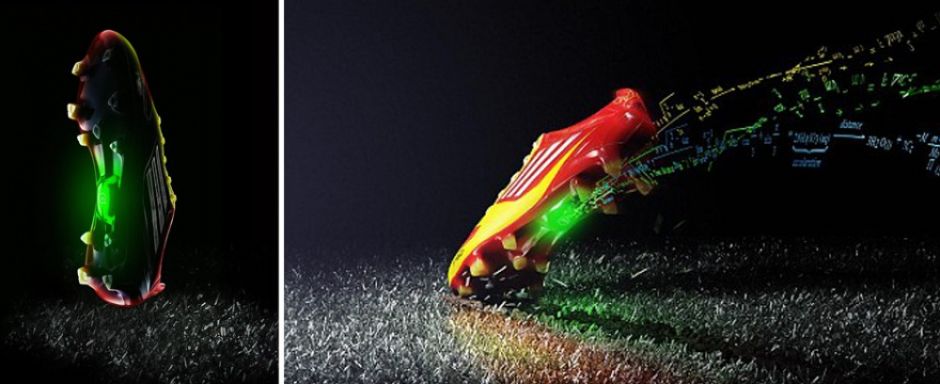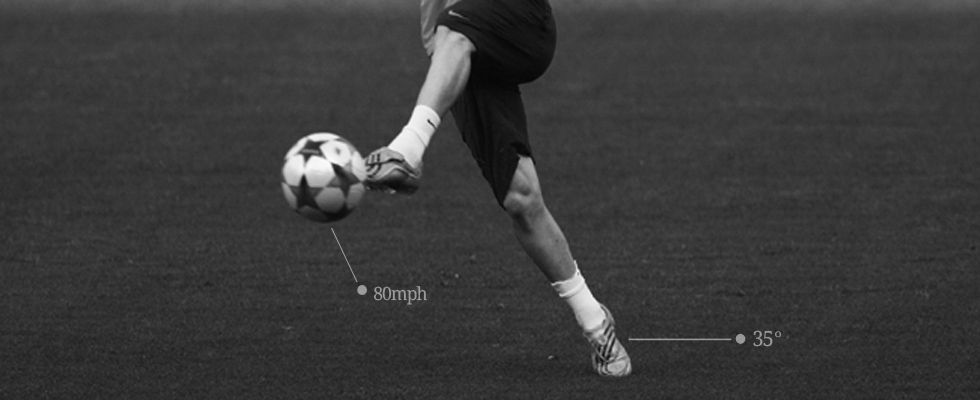Performance Enhancing Data
Athletes and amateurs alike are using advanced technological devices to track, measure and record their performances in training and on the field.

Lionel Messi’s appearance for Argentina last month in a friendly game against Nigeria was a little different to usual. But it wasn’t to do with his role on the field, for he played in his famous striker position, receiving the ball in deep positions and weaving in between defenders. Nor was it to do with his performance, which was typically brilliant and resulted in two assisted goals. What was different, however, was what he wore on his feet.
For the entire game, the superstar striker played in a pair of Adidas F50 miCoach, the first pair of football boots to contain an electronic chip inside its soles. While Messi ran around the helpless Nigerian defenders, the device recorded every piece of information about his speed, work rate and distance travelled. At the final whistle, a rich bank of data had been created that explained his performance over the whole ninety minutes. The player even uploaded this information to his personal website later on for anyone to download and view.
This might all sound like a football match from the future, but it’s just the latest development in technology that is gradually telling us more about how sports people fare out on the field. And it’s all been possible thanks to technological advancements, according to Dr Marco Cardinale, the Head of Sports Science and Research of the British Olympic Association. ‘The miniaturisation of batteries, GPS, magnetometer, gyroscopes and accelerometers in the last few years has meant an increase in the use of tracking devices aimed at quantifying and characterising motion patters in athletes,’ says Cardinal.
So why haven’t we heard about chipped athletes before? The reason, says Cardinale, is that this technology has mostly been reserved for the training field. ‘It’s become so prevalent in training that there’s now as many decisions made on numbers and data as on intuition and feel,’ says Cardinale. ‘Technology applied to equipment is a new addition to this. Now we can have real time information and can visualise what happens, just like in Formula 1.’
Measuring basic body responses such as blood pressure heart rate is nothing new. Heart rate monitors have been available on the market for several years. But what’s more recent is the ability to measure several different performance variables. Ken Clark, a Phd student at the Locomotor Performance Laboratory at the Southern Methodist University in Dallas in the US, says that many Universities, for instance, have now added complex instrumentation to weights rooms.
This has enabled coaches to get a better idea of power, as they can measure how quickly an athlete lifts weights, not just how much weight they can lift in total. ‘Knowledge is power,’ says Ken. ‘The more you know about the demands of the game - whether it’s anaerobic or energy - the better you can gear your training programme to what you need.’ And this is only set to become more accessible with smartphone technology, says Clark, which will enable athletes to immediately upload and analyse data on their handset as soon as they leave the training ground.
‘It could also be transmitted to a team’s database for a collective analysis,’ says Clark.People will be more active and fit if they understand more about how they move and how their body behaves. The ability to provide real time information and continuous feedback on various parameters can actually help more people exercise and motivate them.

Recording performance during a training certainly gives a useful way of seeing how well an athlete performed in a session. But what about during it? One of the biggest trends in sports data at the moment is real-time tracking, says Ken. ‘It gives strength and conditioning coaches a better idea of the demands of the games,’ says Ken, ‘which gives coaches the ability to alter and adjust training programmes as they happen.’
Of course, real-time tracking isn’t going to suddenly turn an athlete into a winner, says Dr Scott Drawer, Head of Research and Innovation at UK Sport, a British high performance sports agency. ‘If you’re not podium potential by the start of the Olympic Games, you won’t be during it,‘ says Drawer. ‘It’s all about the ten years of training, development and exposure you’ve put in during the athletic journey.’
But all this technology isn’t just for the professionals. A growing number of devices are coming to market that are aimed at the consumer, too. The miCoach Adidas boots, for instance, may have been debuted by an Argentinian superstar footballer, but they’ll also be available in sports shops next month (although budding Messis may be deterred by the £245 price tag).
Nike has been pioneering much of this market with its Nike+ device, which syncs up a pair of shoes with a phone, and lets runners measure distance, work rate and calories burnt. But it’s not just runners who are enjoying sports technology. For the wannabe Tiger Woods, there’s the Senso Glove, a pair of golf gloves that have in-built pressure sensors to help perfect grip. For swimmers, there’s the Tempo Trainer, a small device that fits inside a swim cap and transmits an audible beep to help measure pace. And for those that like to work out to music, the New Balance iHome NB639 headphones features an embedded stop watch, heart rate monitor and pedometer.
Even if it’s just to help someone shed a few pounds, at least they can do it in the most digitally up-to-date way. ‘People will be more active and fit if they understand more about how they move and how their body behaves,’ says the British Olympic Association’s Cardinale. ‘The ability to provide real time information and continuous feedback on various parameters can actually help more people exercise and motivate them.’
So what’s next for data monitoring in sport? Cardinale predicts we’ll be monitoring what’s going on inside our bodies, as well as how we’re using them to perform. ‘I expect wearable devices will not only be able to store and transmit data on human movement, but also on specific biological indicators,’ says Cardinale, ‘It will begin to provide some holistic information on how the body is coping with daily stresses and activities.’
In coming years, we can expect to see more sports equipment being made ‘smart’ with electronic devices that measure our fitness, work rate and performance. We’ll also increasingly use the technology to monitor our daily habits in order to work out how to lead a better, healthier lifestyle. Data will certainly tell us a lot, and we hope to see more devices being released to help us track, measure and monitor ourselves.


